1,2-二(三氯甲硅基)乙烷, ≥98%,1,2-Bis(trichlorosilyl)ethane
产品编号:西域试剂-WR367737| CAS NO:2504-64-5| MDL NO:MFCD00013601| 分子式:C2H4Cl6Si2| 分子量:296.92
本网站销售的所有产品仅用于工业应用或者科学研究等非医疗目的,不可用于人类或动物的临床诊断或者治疗,非药用,非食用,
| 英文名称 | 1,2-Bis(trichlorosilyl)ethane |
|---|---|
| CAS编号 | 2504-64-5 |
| 产品熔点 | 27-29 °C(lit.) |
| 产品沸点 | 199.0±13.0 °C at 760 mmHg |
| 产品密度 | 1.5±0.1 g/cm3 |
| 产品闪点 | 72.3±14.6 °C |
| 精确质量 | 293.798279 |
| LogP | 8.47 |
| 外观性状 | 固体;White or Colorless to Light yellow powder to lump to clear liquid |
| 蒸气压 | 0.5±0.4 mmHg at 25°C |
| 折射率 | 1.486 |
| 储存条件 | 2-8°C |
相关文档
化学品安全说明书(MSDS)
下载MSDS质检证书(COA)
相关产品
| 符号 |
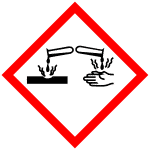
GHS05 |
|---|---|
| 信号词 | Danger |
| 危害声明 | H314 |
| 补充危害声明 | Reacts violently with water. |
| 警示性声明 | P280-P305 + P351 + P338-P310 |
| 个人防护装备 | Eyeshields;Faceshields;full-face particle respirator type N100 (US);Gloves;respirator cartridge type N100 (US);type P1 (EN143) respirator filter;type P3 (EN 143) respirator cartridges |
| 危害码 (欧洲) | C: Corrosive; |
| 风险声明 (欧洲) | R14 |
| 安全声明 (欧洲) | S26-S36/37/39-S43-S45 |
| 危险品运输编码 | UN 3261 8/PG 1 |
| WGK德国 | 3 |
|
Section I.Chemical Product and Company Identification Chemical Name 1,2-Bis(trichlorosilyl)ethane Portland OR SynonymSilane, 1,1'-(1,2-ethanediyl)bis[1,1,1-trichloro- (CA INDEX NAME) Chemical FormulaC2H4Cl6Si2 2504-64-5
CAS Number Section II.Composition and Information on Ingredients Chemical NameCAS Number Percent (%)TLV/PELToxicology Data 1,2-Bis(trichlorosilyl)ethane2504-64-5Min. 95.0 (T) Not available.Not available. Section III. Hazards Identification Corrosive to skin, eyes, and respiratory system. Liquid or spray mist may produce tissue damage, particularly in mucous Acute Health Effects membranes of the eyes, mouth and respiratory tract. Skin contact may produce burns. Eye contact can result in corneal damage or blindness. Inhalation of the spray mist may produce severe irritation of respiratory tract, characterized by coughing, choking, or shortness of breath. Corrosive materials may cause serious injury if ingested. Follow safe industrial hygiene practices and always wear proper protective equipment when handling this compound. CARCINOGENIC EFFECTS : Not available. Chronic Health Effects MUTAGENIC EFFECTS : Not available. TERATOGENIC EFFECTS : Not available. DEVELOPMENTAL TOXICITY: Not available. Repeated or prolonged contact with spray mist may produce chronic eye irritation and severe skin irritation. Repeated or prolonged exposure to spray mist may produce respiratory tract irritation leading to frequent attacks of bronchial infection. Section IV.First Aid Measures Eye ContactCheck for and remove any contact lenses. In case of contact, immediately flush eyes with plenty of water for at least 15 minutes. Get medical attention. Skin ContactIn case of contact, immediately flush skin with plenty of water. Remove contaminated clothing and shoes. Wash clothing before reuse. Thoroughly clean shoes before reuse. Get medical attention. InhalationIf the victim is not breathing, perform mouth-to-mouth resuscitation. Loosen tight clothing such as a collar, tie, belt or waistband. If breathing is difficult, oxygen can be administered. Seek medical attention if respiration problems do not improve. IngestionDO NOT INDUCE VOMITING. Loosen tight clothing such as a collar, tie, belt or waistband. If the victim is not breathing, perform mouth-to-mouth resuscitation. Examine the lips and mouth to ascertain whether the tissues are damaged, a possible indication that the toxic material was ingested; the absence of such signs, however, is not conclusive. Section V.Fire and Explosion Data 200°C (392°F) Auto-Ignition FlammabilityMay be combustible at high temperature. Flammable LimitsNot available. Flash Points78°C (172.4°F). Combustion ProductsThese products are toxic carbon oxides (CO, CO2), halogenated compounds. Silicates. WARNING: Highly toxic HCl gas is produced during combustion. Fire HazardsNot available. Risks of explosion of the product in presence of mechanical impact: Not available. Explosion Hazards Risks of explosion of the product in presence of static discharge: Not available. Fire Fighting MediaSMALL FIRE: Use DRY chemical powder. and InstructionsLARGE FIRE: Use water spray, fog or foam. DO NOT use water jet. Consult with local fire authorities before attempting large scale fire-fighting operations. Continued on Next Page 1,2-Bis(trichlorosilyl)ethane Section VI.Accidental Release Measures Spill CleanupCorrosive material. Moisture sensitive material. Stop leak if without risk. If the product is in its solid form: Use a shovel to put the material into a convenient waste disposal Instructions container. If the product is in its liquid form: Absorb with DRY earth, sand or other non-combustible material. DO NOT get water inside container. Absorb with an inert material and put the spilled material in an appropriate waste disposal. DO NOT touch spilled material. Use water spray curtain to divert vapor drift. Prevent entry into sewers, basements or confined areas; dike if needed. Eliminate all sources of ignition. Consult federal, state, and/or local authorities for assistance on disposal. Section VII. Handling and Storage CORROSIVE. MOISTURE SENSITIVE. HANDLE AND STORE UNDER ARGON. Keep container dry. Keep away from Handling and Storage heat. Mechanical exhaust required. When not in use, tightly seal the container and store in a dry, cool place. Avoid Information excessive heat and light. Do not breathe gas/fumes/ vapor/spray. Never add water to this product. Wear suitable protective clothing. If you feel unwell, seek medical attention and show the label when possible. Treat symptomatically and supportively. Always store away from incompatible compounds such as oxidizing agents, moisture. Section VIII. Exposure Controls/Personal Protection Provide exhaust ventilation or other engineering controls to keep the airborne concentrations of vapors below their respective Engineering Controls threshold limit value. Ensure that eyewash station and safety shower is proximal to the work-station location. Face shield. Lab coat. Dust respirator. Boots. Gloves. Suggested protective clothing might not be sufficient; consult a Personal Protection specialist BEFORE handling this product. Be sure to use a MSHA/NIOSH approved respirator or equivalent. Not available. Exposure Limits Section IX. Physical and Chemical Properties Physical state @ 20°CLiquid. (White, lumps.)Solubility Not available. 1.483 (water=1) Specific Gravity Molecular Weight296.94Partition CoefficientNot available. Boiling PointNot available.Vapor Pressure<0.13 kPa (@ 25°C) 28°C (82.4°F) (freezing point)Not available. Melting PointVapor Density Refractive IndexNot available.VolatilityNot available. Not available.Not available. Critical TemperatureOdor Not available.Not available. ViscosityTaste Section X.Stability and Reactivity Data This material is stable if stored under proper conditions. (See Section VII for instructions) Stability Conditions of InstabilityAvoid excessive heat and light. Moisture sensitive. Incompatibilities Reactive with strong oxidizing agents, moisture. Section XI. Toxicological Information Not available. RTECS Number Eye Contact. Ingestion. Inhalation. Skin contact. Routes of Exposure Not available. Toxicity Data Chronic Toxic EffectsCARCINOGENIC EFFECTS : Not available. MUTAGENIC EFFECTS : Not available. TERATOGENIC EFFECTS : Not available. DEVELOPMENTAL TOXICITY: Not available. Repeated or prolonged contact with spray mist may produce chronic eye irritation and severe skin irritation. Repeated or prolonged exposure to spray mist may produce respiratory tract irritation leading to frequent attacks of bronchial infection. Acute Toxic EffectsCorrosive to skin, eyes, and respiratory system. Liquid or spray mist may produce tissue damage, particularly in mucous membranes of the eyes, mouth and respiratory tract. Skin contact may produce burns. Eye contact can result in corneal damage or blindness. Inhalation of the spray mist may produce severe irritation of respiratory tract, characterized by coughing, choking, or shortness of breath. Corrosive materials may cause serious injury if ingested. Follow safe industrial hygiene practices and always wear proper protective equipment when handling this compound. Continued on Next Page 1,2-Bis(trichlorosilyl)ethane Section XII.Ecological Information EcotoxicityNot available. Not available. Environmental Fate Section XIII. Disposal Considerations Recycle to process, if possible. Consult your local regional authorities. You may be able to dissolve or mix material with a Waste Disposal combustible solvent and burn in a chemical incinerator equipped with an afterburner and scrubber system. Observe all federal, state and local regulations when disposing of the substance. Section XIV. Transport Information DOT ClassificationDOT Class 8: Corrosive material PIN Number Proper Shipping NameChlorosilanes, corrosive, n.o.s. II Packing Group (PG) DOT Pictograms Section XV. Other Regulatory Information and Pictograms TSCA Chemical InventoryThis compound is ON the EPA Toxic Substances Control Act (TSCA) inventory list. (EPA) WHMIS ClassificationCLASS E: Corrosive liquid. On NDSL (Canada) EINECS Number (EEC) 219-710-9 EEC Risk StatementsR34- Causes burns. SECTION 16 - ADDITIONAL INFORMATION N/A |
| 上游产品 10 | |
|---|---|
| 下游产品 4 | |

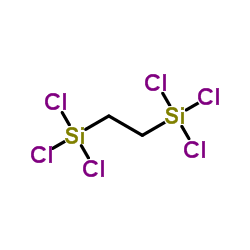
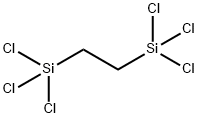
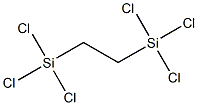
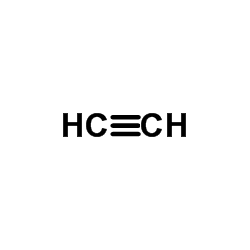
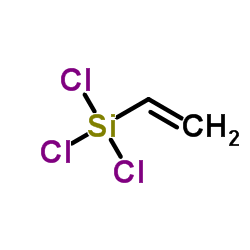
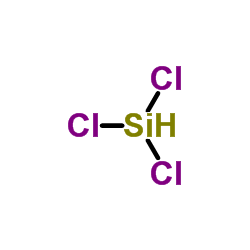
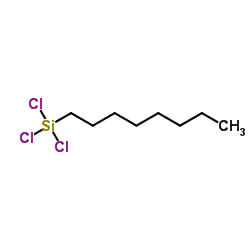
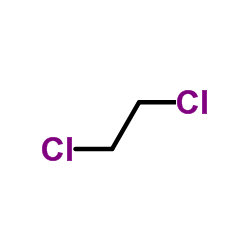
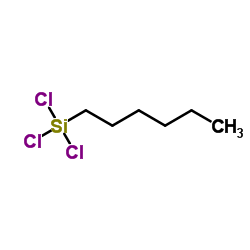

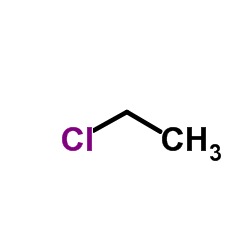


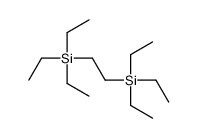
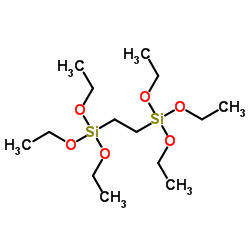
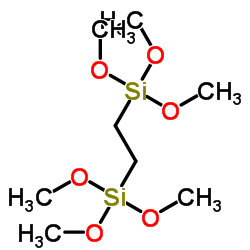






 浙公网安备 33010802013016号
浙公网安备 33010802013016号